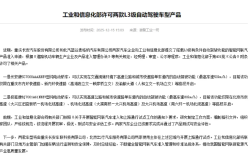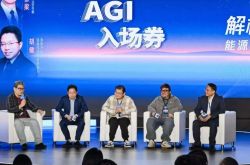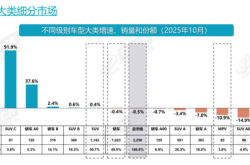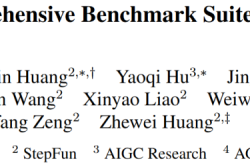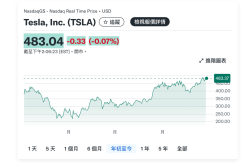Robot Hardware: Navigating Through the Turbulent Waters
![]() 08/26 2025
08/26 2025
![]() 494
494
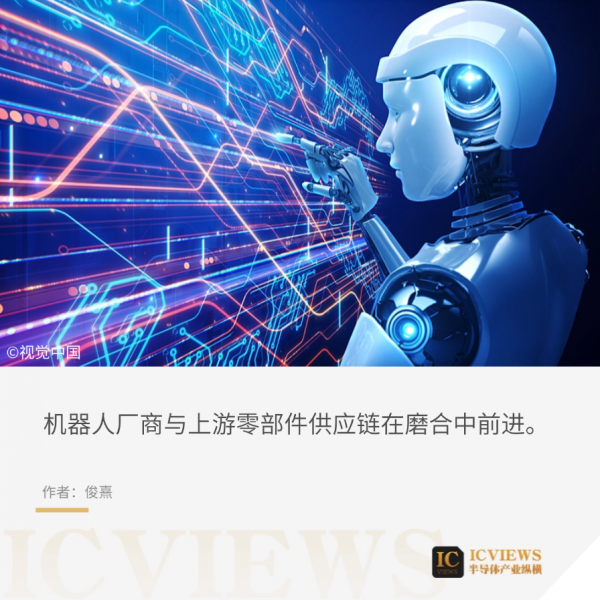
2025 undeniably marks the dawn of an explosive era for the robot industry.
In terms of public fascination, events like the World Artificial Intelligence Conference (WAIC) and the World Robot Conference (WRC) have witnessed swarms of visitors flocking to the "live" robot exhibits, displaying a profound interest in the technology.
Data from MIR DATABANK indicates that with continued advancements in mass production capabilities, the production of Chinese humanoid robots will surpass 10,000 units in 2025, with a compound annual growth rate of 78.6% from 2025 to 2030.
However, the first half of 2025 also saw significant "turbulence" within the robot industry, particularly in the hardware sector.
On one hand, low localization rates for core components and inadequate dynamic control accuracy remain pivotal bottlenecks impeding the large-scale deployment of robot products. On the other hand, there is a surge in customized demands for scenarios across industries and services, but vendors adopt varying technical approaches, and no clear, mature solution stands out.
During this period, robot manufacturers and upstream component supply chains took their initial, albeit unsteady, steps forward through trial and error.
01
Understanding Robot Hardware
The physical capabilities of humanoid robots are built upon their core hardware, collectively forming a sophisticated execution and perception system. The execution system is responsible for generating and transmitting power, granting the robot mobility, while the perception system serves as its "nerves," enabling interaction with the external world.
Robot movement initiates with the drive system, whose core comprises various high-performance motors. Frameless torque motors, as key power sources, are typically integrated directly into the robot's joints. Their compact structure and high torque density provide robust and stable power for rotating joints. When converting rotational motion into linear thrust, high-precision screw transmission mechanisms are employed. Among them, planetary roller screws, capable of withstanding heavy loads while maintaining high motion accuracy and stability, are crucial for achieving linear actions such as limb extension.
To effectively harness the high-speed, low-torque power generated by the motor in the joints, precision reducers play a vital role as intermediate transmission mechanisms. They convert the motor's high rotational speed into low rotational speed and high torque output, enabling precise control over the robot's movement force and speed. Depending on the joint load, different transmission solutions such as harmonic reducers or RV reducers are utilized. Among all these motion joints, bearings are indispensable basic components that support mechanical rotating bodies and ensure the smoothness and precision of every robot movement by minimizing friction.
Perceptual ability is a prerequisite for robots to achieve intelligent interaction. Force sensors are one of their core perception elements, capable of measuring in real-time the forces and torques generated when the robot comes into contact with the outside world. Especially in critical areas such as wrists and ankles, fully functional six-axis force torque sensors are installed. These sensors can simultaneously detect forces and torques in three directions, providing the robot with comprehensive force feedback. This information is crucial for the robot to maintain balance, achieve compliant force control, and interact safely with the environment.
In terms of cost proportion, motors, sensors, reducers, and screws account for the majority. According to data from Mitu Consulting, screws account for 19.00%, frameless torque motors for 16.00%, reducers for 13.00%, force sensors for 11.00%, coreless motors for 8.00%, and bearings for 5.50%.
02
Localization Challenges and Supply Chain Mismatches
The first half of 2025 was fraught with challenges on the path to localization within the robot supply chain.
The planetary roller screw market is firmly dominated by European companies such as Rollvis and GSA, which hold the vast majority of market share. Chinese manufacturers, represented by Xinjian Transmission and Shuanglin Co., Ltd., are catching up, with Xinjian Transmission having secured orders from North American customers. In early 2025, its industrialization project for producing 1 million planetary roller screws for humanoid robots commenced in Qingshanhu Science and Technology City, Hangzhou, Zhejiang Province.
The United States' KOLLMORGEN leads in frameless torque motor technology, while brands such as Switzerland's MAXON dominate the coreless motor market. In contrast, Chinese companies like Kinco Automation and Mingzhi Electric are accelerating technological iteration and market penetration in their respective fields. Kinco Automation disclosed that an order for motors from a humanoid robot customer last year ranged from hundreds to thousands of units, but this year it has swiftly surged to the "ten-thousand unit level".
Harmonic Drive and Nabtesco dominate the harmonic and RV reducer markets, respectively. However, Chinese companies have made significant breakthroughs in this field. Green Harmonic has successfully broken foreign technology monopolies and achieved large-scale production of harmonic reducers, while companies like Shuanghuan Transmission have also made progress in the RV reducer sector. It is estimated that the market increment for harmonic reducers alone in humanoid robot applications will reach 8.4 billion yuan by 2029.
In the realm of six-axis force torque sensors, American companies like ATI and German firm Schunk occupy half of the global market. Chinese manufacturers such as Yuli Instrument, Holykell, and Donghua Test are catching up, with some already having products interfacing with top-tier global robot manufacturers like Tesla.
Apart from the gradual increase in localization rates, more and more suppliers are transitioning from a wait-and-see attitude to active participation.
Previously, the relevant person in charge of reducer supplier Hengli Precision Industry had stated that the company would "deliberately select leading manufacturers in the industry" when accepting orders for humanoid robots, such as Xiaomi and Xpeng, "after all, the entire industry is still in its nascent stages of development, and we are also afraid of wasting resources by expanding too early." Tesla supplier Beite Technology also expressed "confidence in the future development of the humanoid robot industry, but if mass production is to be officially launched, many issues still need to be resolved."
According to reports, in April, a vendor who had previously supplied core components such as drives to leading manufacturers like Unitree said that parts that precisely match the needs of humanoid robots have not yet been mass-produced. "Currently, we provide demo production solutions for the needs of some manufacturers, but the production cycle is about twice as long as that of standard products."
Suppliers' wait-and-see attitudes are primarily influenced by shipment volumes and application scenarios in the midstream and downstream. According to data from China Business News, in 2024 and early 2025, shipments of humanoid robots were primarily in the range of tens to hundreds of units. As of 2024, Fourier Intelligent's humanoid robot GR-1 had delivered over 100 units; in 2025, Ubtech Robotics announced the completion of delivery of 200 full-size humanoid robots. UBTech also announced in March that Dongfeng Liuzhou Automobile would complete the procurement and deployment of 20 UBTech industrial humanoid robots in the first half of this year.
The growth in humanoid robot shipments accelerated after entering 2025. At the recently concluded WRC, Unitree Technology founder Wang Xingxing stated: "In the coming years, it is guaranteed that shipments of humanoid robots across the industry will double annually. If there is a breakthrough in AI technology, it is even possible that shipments will suddenly reach hundreds of thousands or even millions in one year in the next 2-3 years."
In June, Zhiyuan Robotics and Unitree Technology jointly won a 124 million yuan humanoid robot procurement order from China Mobile. Among them, Zhiyuan Robotics won the bid for the "full-size humanoid biped robot" package with 78 million yuan, while Unitree Technology won the bid for the "small-size humanoid biped robot, computing backpack, and five-finger dexterous hand" package with 46.05 million yuan. In July, UBTech won a 90.5115 million yuan robot equipment procurement project from Miyi (Shanghai) Automotive Technology Co., Ltd.
In an interview, Yao Maoqing, Zhiyuan's partner and president of the embodied business department, admitted that the current challenge is the core supply chain bottleneck: "The capacity and consistency of upstream embodied mechanisms, joints, reducers, and other components are significant challenges." Currently, Zhiyuan's cooperating suppliers are mainly small and medium-sized enterprises, and traditional electromechanical giants have not yet fully entered the market. "We are accompanying suppliers in their growth," said Yao Maoqing, "With the addition of ecological partners, humanoid robots are demonstrating even greater industrial opportunities than new energy vehicles."
During the 2025 WRC, multiple OEMs and component manufacturers revealed that orders, capacity, and delivery schedules have significantly improved. Some robot OEMs have achieved deliveries of hundreds of units, and the industrial chain has entered an accelerated implementation phase.
03
Manufacturers Embrace Independent Research + Industry Collaboration Mode
The surge in orders and mismatches in upstream supply chains have prompted changes in the business models of most robot manufacturers. On one hand, independent research on hardware can reduce dependence on the supply chain while better aligning the hardware with the software model of one's own products. Therefore, more manufacturers are beginning to view independent hardware research as their competitive edge. On the other hand, actively arranging ecological cooperation with component suppliers is also crucial.
For instance, while adhering to independent hardware research, Kepler Robotics has introduced industrial listed companies such as Zhaofeng Co., Ltd., Hanwei Technology, and Qiaofeng Intelligence as shareholders. Over 80% of Kepler's core components are independently developed, and this vertically integrated model gives it significant advantages in hardware performance and cost control. In terms of industrial collaboration, Zhaofeng provides Kepler with high-precision planetary roller screws, shortening the delivery cycle from 6 months to 3 months; Hanwei Technology provides systematic and full-chain intelligent perception solutions; Qiaofeng Intelligence leverages its high-end CNC machine tool manufacturing capabilities to ensure the processing precision of core components.
While adhering to independent research on core components, Unitree Technology has collaborated with suppliers such as Zhongda Lide, Mingzhi Electric, Orbbec, and Changsheng Bearing, providing significant support for its cost advantages. According to research reports from Industrial Securities, based on cost calculations for various component parts, the total hardware cost of Unitree's humanoid robot G1 is approximately 86,000 yuan, and the total hardware cost of the advanced version (EDU) is approximately 190,000 yuan, both significantly lower than the total hardware cost of Tesla's Optimus, which is approximately 368,000 yuan.
At the 2025 WRC, Xingdong Jiyuan founder Chen Jianyu stated that the company is developing versatile, modular robot products. These robots can flexibly change their form according to different scenario needs, including bipedal, wheeled, and humanoid forms, much like LEGO. Additionally, due to the current imperfect robot supply chain, "Xingdong Jiyuan" is independently researching and developing from the smallest unit of the robot body, such as joint modules, control units, motors, and reducers, to achieve vertical integration and stable control of the supply chain, ensuring high-quality and efficient product delivery. Regarding commercialization strategy, Chen Jianyu mentioned the concept of "dropping eggs along the way." For instance, he believes that once the robot's dexterous hand is developed, it can be sold first without waiting for the entire robot. This not only helps gradually reduce hardware costs but also acquires certain data, forming a data flywheel that feeds back into research and development.
04
Conclusion
After enduring the most turbulent period in hardware, robot software is gradually starting to receive more attention. Wang Xingxing stated at the 2025 WRC that the biggest bottleneck in the current robot industry is not hardware but the immaturity of the "embodied intelligence" AI model. He analogized: "The robot's 'GPT moment' has not yet arrived – only when robots can complete general tasks in unfamiliar environments like humans (such as tidying a room or handing over water) will it be considered a true breakthrough."
Chen Jianyu also mentioned in an interview: "Software drives hardware, and scenarios drive software. Therefore, it is crucial to connect the entire loop and define the technology and products of Xingdong Jiyuan. Next, we are also collaborating with many component suppliers to jointly refine new components that meet the needs of humanoid robots."
However, it is undeniable that whether it is hardware or software, the industry's approach to advancement is the same: technology must be converted into usable products as soon as possible to further complete commercialization and marketization. Whoever completes product launches and continuous iterations first will have a first-mover advantage. Vendors who are the first to complete marketization will win the favor of large suppliers, further ensuring their self-sustainability.
The current turbulence in robot hardware is far from over. We are all curious about who will be the first to emerge victorious from this chaotic battle.


